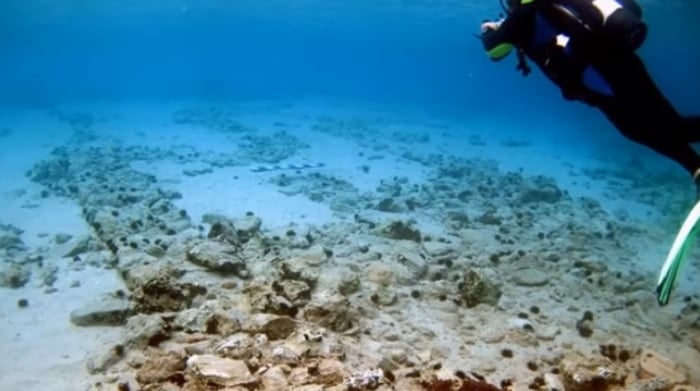
Pavlopetri (or “Paulopetri”) is a small islet off the coast of Laconia in the southern Peloponnese, where ancient history meets the endless blue of the Mediterranean Sea. This lovely place, which remains almost completely unknown to the majority of people, hides one of the most amazing stories in Greek history since it is the oldest ancient Greek city that has ever been discovered underwater.
Its name, which translates to “Paul’s Stone,” is directly related to St. Peter and St. Paul, the two greatest Christian apostles and martyrs, who traveled far and wide spreading Christianity during the first century AD.
The city’s long history, however, stretches nearly five thousand years back into antiquity since the broader region was known to have been inhabited during the earliest years of Greek history.
Discovered in 1967 by Nicholas Flemming, this ancient Greek town is now the oldest underwater “lost city” anywhere on the globe.
Flemming was using aerial photography to study the coastline when he noticed a series of unusual lines on the seabed. These lines turned out to be the remains of Pavlopetri’s streets and buildings.
The year after Pavlopetri’s discovery, in 1968, archaeologists from the University of Cambridge in the UK visited this extraordinary place to map the entire location and determine the extent of the ancient lost city.
At first, scientists believed their discovery was originally of a Mycenaean-era city, but later research revealed it was much older.
Ancient Greek underwater city Pavlopetri
More specifically, scientists were able to determine that the ancient Greek underwater city of Pavlopetri was initially inhabited in 2800 BC after elements dating back to the Bronze Age were found and identified.
Perhaps the most unique feature of this area is that up until now, its overall layout has remained intact, making it a location of extraordinary importance to archaeologists.
Researchers believe the city was submerged after a series of three cataclysmic earthquakes occurred in the area around 1000 BC.
These violent seismic events, which led to the city never being able to re-emerge from the bottom of the sea, played a crucial role in maintaining its original characteristics.
Untouched by human intervention, its secrets have remained unknown for thousands of years.
UNESCO says that Pavlopetri dates back to more than five thousand years ago and represents one of the first “planned” cities—with residential neighborhoods, administrative buildings, factories for the production of pottery, markets, and so on. It was listed on the 2016 World Monuments Watch.
The city is laid out in a grid pattern. The buildings are made of stone and mudbrick, and some have up to 12 rooms.
Thousands of pottery fragments have been found at Pavlopetri, providing evidence of the city’s trade and craft industries. The pottery includes both local and imported wares. Bronze and iron artifacts have also been found, indicating that the city had a skilled metalworking industry. The artifacts include tools, weapons, and jewelry.
The submerged remains cover an area of more than five hundred thousand square feet.
The vast majority of the artifacts found at Pavlopetri are still underwater. Archaeologists are working to develop new techniques for excavating and conserving the artifacts without damaging the site.
Some of the artifacts that have been recovered from Pavlopetri are on display at the Archaeological Museum of Nafplion in Greece. These artifacts include pottery, jewelry, and metal objects. The museum also has a scale model of the submerged city, which gives visitors a glimpse of what Pavlopetri may have looked like in its heyday.
Pavlopetri might even have inspired the tale of Atlantis
Pavlopetri was an active and prosperous port city. Further excavations will provide new information about ancient maritime trade routes, commerce, religion, government, and daily life.
With careful management, the site has potential as a tourist attraction with an on-shore museum, guided snorkeling tours, and visits via glass-bottom boats. In 2011, BBC featured Pavlopetri in the documentary City Beneath the Waves, which included 3D visualizations of the city map and its structures.
This Bronze Age city might even have inspired one of the world’s most enduring myths—the tale of Atlantis.
UNESCO warns, however, that Pavlopetri is threatened by pollution, damage caused by ships anchoring, looting, and pillaging, as well as infrastructure construction projects such as pipelines and power plants.
See all the latest news from Greece and the world at Greekreporter.com. Contact our newsroom to report an update or send your story, photos and videos. Follow GR on Google News and subscribe here to our daily email!



